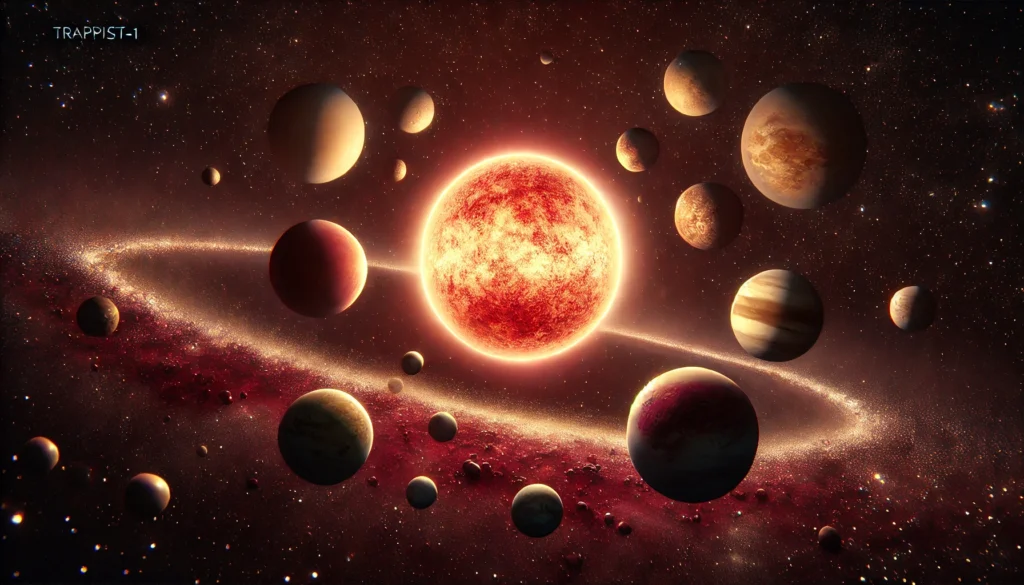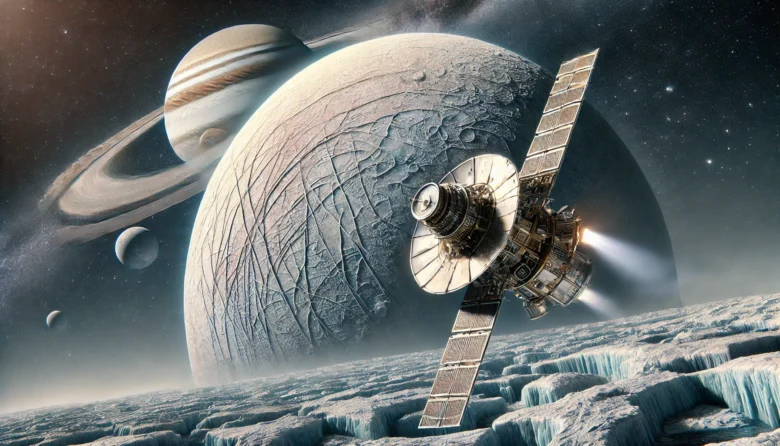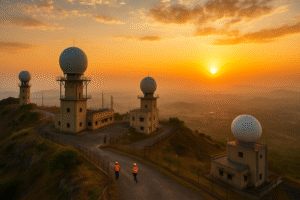Fun Fact: Did you know that humanity is now looking at destinations far beyond Mars, with plans to explore distant moons and even other solar systems?
Space exploration has always been the epitome of human curiosity and ambition. From landing on the Moon to sending robotic missions to Mars, we’ve taken significant strides in understanding our universe. But now, as humanity pushes the boundaries of space exploration, we’re setting our sights even further. The Future of Space Exploration: New Frontiers Beyond Mars focuses on the bold ambitions to explore destinations that once seemed out of reach. We’re no longer just dreaming of stepping on Mars but are aiming beyond it — into the depths of space and time.
In this article, let’s dive into what’s next for space exploration. We’ll explore destinations like the icy moons of Jupiter, missions toward exoplanets in distant solar systems, and what it means for humankind to reach beyond Mars. Buckle up as we explore the future!
The Mars Effect and Why We’re Looking Beyond
Mars has been a focal point of exploration for decades, inspiring ambitious missions by NASA (National Aeronautics and Space Administration), ESA (European Space Agency), and private companies like SpaceX. The Red Planet has long been considered the next viable frontier after Earth. However, as technology advances, Mars increasingly becomes a stepping stone rather than the final destination.
Elon Musk’s SpaceX, a pioneer in private space exploration, aims to send humans to Mars by the mid-2020s. But as exciting as it is, Mars remains within our solar system. As scientists make discoveries that hint at the possibility of life beyond our planetary neighbourhood, the urge to explore other parts of the universe grows stronger.

Moons with Potential: Europa, Enceladus, and Titan
Beyond Mars lie some intriguing possibilities for exploration within our solar system — specifically the moons of Jupiter and Saturn. These moons are not only fascinating but also potentially harbour the conditions necessary for life.
Europa (Moon of Jupiter):
Europa is known for its vast ice-covered surface and is believed to have a subsurface ocean. NASA’s upcoming Europa Clipper mission, set to launch in the early 2030s, will aim to study this ocean and determine if it could support life. Imagine a world beneath an icy crust where water might be teeming with life. The Europa Clipper will use sophisticated instruments to study its ice shell and evaluate the depth and salinity of the ocean, bringing us one step closer to understanding its habitability.
Enceladus (Moon of Saturn):
Like Europa, Enceladus has a frozen surface with a potential liquid ocean beneath. But what makes it stand out are the geysers erupting from its surface, releasing water vapour and organic compounds. In 2017, scientists discovered that these geysers contain hydrogen, an essential building block of life. Enceladus offers a unique opportunity to study a world where life could exist without sunlight, sustained instead by hydrothermal vents, just like some deep-sea environments on Earth.
Titan (Moon of Saturn):
Titan stands out for its dense atmosphere and the presence of surface lakes filled with liquid methane and ethane. The upcoming NASA Dragonfly mission, set to launch in 2027, will send a drone to Titan to explore its surface and assess its chemistry and potential habitability. Imagine a helicopter-like drone flying over Titan’s misty landscape, studying its alien lakes and rivers.
Beyond the Solar System: The Quest for Exoplanets
While moons within our solar system present exciting possibilities, exoplanets in distant solar systems hold an even greater promise. These planets, which orbit stars outside our solar system, could potentially have Earth-like environments. The discovery of such worlds has given birth to a new wave of space missions, hoping to detect life-supporting conditions and possibly even signs of alien life.
TRAPPIST-1 System:
Located about 39 light-years away, the TRAPPIST-1 system boasts seven Earth-sized planets, three of which are in the habitable zone. With the James Webb Space Telescope (JWST) now operational, scientists are gathering data on the atmospheres of these planets. The aim is to determine whether they possess conditions similar to Earth’s, such as liquid water or a breathable atmosphere. If we find indicators of life-supporting conditions, the TRAPPIST-1 planets might just be the most important discoveries in our quest for life beyond Earth.
Proxima Centauri b:
Proxima Centauri b orbits the closest star to our solar system, Proxima Centauri, located just over four light-years away. This exoplanet, discovered in 2016, lies within the habitable zone and has sparked immense interest in potential missions. Breakthrough Starshot, a project backed by investor Yuri Milner and physicist Stephen Hawking, proposes sending lightweight, sail-powered probes to Proxima Centauri at speeds up to 20% of the speed of light. If successful, these probes could provide valuable information about Proxima Centauri b’s atmosphere and surface conditions.
Innovative Space Technologies Powering Future Missions
Exploring these distant worlds requires technological innovations on an unprecedented scale. Traditional chemical rockets are too slow and inefficient for interstellar travel, prompting researchers to investigate alternative propulsion methods.
Nuclear Thermal Propulsion (NTP):
NASA and the Defense Advanced Research Projects Agency (DARPA) are exploring nuclear thermal propulsion technology, which has the potential to shorten space travel duration significantly. NTP engines use a nuclear reactor to heat propellant, creating thrust far more powerful than traditional rockets. This technology could reduce Mars missions from nine months to about three, and in the long term, it could be the foundation for missions to outer solar system destinations.
Solar Sails:
Solar sails use the pressure exerted by sunlight to propel spacecraft through space. The Japanese Aerospace Exploration Agency (JAXA) has tested this concept with their IKAROS spacecraft. Solar sails could be an energy-efficient option for lightweight spacecraft on long-duration missions to the outer planets or even beyond our solar system.
Artificial Intelligence (AI):
Advanced AI will be crucial for autonomous decision-making on these long-duration missions. As distances increase, communication delays make real-time control from Earth impossible. NASA’s Perseverance rover already uses AI to navigate the Martian terrain, and future missions will rely even more on this technology. AI-powered spacecraft could analyze new environments and even conduct scientific experiments independently, pushing the boundaries of what humanity can accomplish remotely.
https://www.youtube.com/watch?v=LEk1lXNJkJM&pp=ygUwRXhwbG9yaW5nIHRoZSBOZXh0IEZyb250aWVyIGluIFNwYWNlIEJleW9uZCBNYXJzThe Human Factor: Challenges and Aspirations
As we reach beyond Mars, we face not only technological but also human challenges. Prolonged exposure to space radiation, the psychological effects of isolation, and the need for sustainable life support systems are pressing issues.
Radiation Protection:
Space agencies are investigating new materials and magnetic shields to protect astronauts from cosmic radiation. Future missions will need these innovations, especially as astronauts embark on multi-year journeys beyond the protective magnetosphere of Earth.
Sustainability in Space:
As humanity ventures further, the need for sustainable resources is paramount. Ideas such as asteroid mining and producing food in space are critical components of making interstellar travel feasible. For instance, NASA’s Advanced Plant Habitat is already experimenting with growing crops in space, a crucial step toward long-duration missions.
Conclusion: Beyond Mars — Humanity’s Next Adventure Awaits
The future of space exploration is a journey toward unknown worlds. From the icy oceans of Europa and Enceladus to the distant exoplanets in the TRAPPIST-1 system, the possibilities are endless and exhilarating. These ambitions aren’t merely technological; they reflect our deepest human curiosity to explore, learn, and thrive. By building on what we learn from Mars and beyond, we’re inching closer to becoming a truly space-faring civilization.
As we push beyond Mars, the journey will be marked by unparalleled discoveries and challenges. So, keep looking up and stay curious — because the next great adventure in space may be just around the corner.
Author’s Note:
I hope this article inspires you to consider humanity’s future in space. The journey beyond Mars will define the next era of exploration, and with each step, we’re rewriting humankind’s story.
G.C., Ecosociosphere contributor.
References and Further Reading:
- NASA Europa Clipper Mission
- Arena, M., Arena, M., Ambrogiani, P., Raiola, V., Bocchetto, F., Tirelli, T., & Castaldo, M. (2023). Design and Qualification of an Additively Manufactured Manifold for Aircraft Landing Gears Applications. Aerospace, 10(1), 69.
- Latest Discoveries Made Through Astronomical Images – Astronomic Photography. https://www.astronomicphoto.com/latest-discoveries-made-through-astronomical-images/
- The James Webb Space Telescope is capturing the universe on a 68GB SSD. https://ca.style.yahoo.com/the-james-webb-space-telescope-has-a-68-gb-ssd-095528169.html
- Exploring Exoplanets: The Search for Habitable Worlds Beyond Earth. https://moneymoim.com/exploring-exoplanets-the-search-for-habitable-worlds-beyond-earth/
- Youinou, G., Lin, C. S., Jaoude, A. A., & Jesse, C. J. (2020). Nuclear Thermal Propulsion Scoping Analysis of Fuel Plate Core Configurations. https://doi.org/10.2172/1596107
- (2022). United States : NASA-Supported Solar Sail Could Take Science to New Heights. MENA Report, (), .




